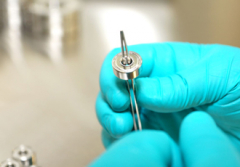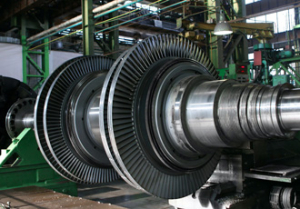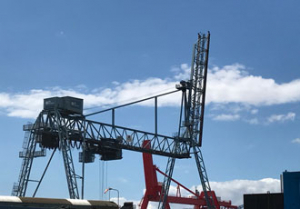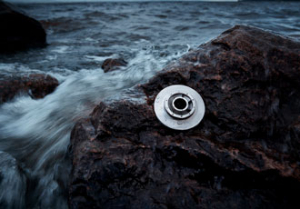Don’t blame it on the bearings

Stamping a low quality metal with a high quality machine tool probably wouldn’t result in success. But how many operators, unaware of the low grade material, would blame the machine tool? This event serves as a reminder that pinning the blame on the wrong thing, in any scenario, simply isn’t helpful. But as Chris Johnson, Managing Director of SMB Bearings explains, similar scapegoating also takes place with bearings.
As a bearing rotates, one ring usually experiences load at all points of its circumference. Depending on the application, this could be the inner ring or outer ring.
In this case, the inner ring will have a tendency to rotate around the shaft, or the outer ring will rotate inside the housing and cause wear to both bearing and shaft or housing. This movement is also known as 'creep'.
The right fit
The shaft or housing must be machined to the correct tolerances to ensure a suitably tight fit to prevent this from happening. A tight shaft or housing fit is also needed where a lot of vibration exists - this prevents the vibration from causing the bearing to move within its mountings. Tight fits are also often used to provide extra support to the inner or outer ring if the bearing is subjected to a very heavy load.
Where a tight fit is used, the act of pressing a bearing on to a shaft, or into a housing, will smooth the surface of the shaft or housing by removing a small amount of surface metal. This has the effect of either making the shaft slightly smaller, or the housing slightly larger.
Ground surfaces are affected less by the pressing process. Turned - or lathed - surfaces are affected more as the initial surface finish is rougher. A hollow shaft may be compressed more easily, which means that resulting fit is not as tight as with a solid shaft. A thin housing will be stretched more easily than a thick housing, so the resulting housing fit may be looser with a thin housing. All of these factors must be considered by the bearing user before deciding on the shaft and housing tolerances.
If a tight fit is required, the shaft or housing tolerances must be carefully checked against the internal clearance of the bearing. For example, an ‘interference’ shaft fit is where the shaft is actually bigger than the bearing inner ring. A lot of force is required to fit the bearing on to the shaft, which stretches the inner ring around the shaft. This slight increase in the size of the inner ring causes a reduction in the bearing’s internal clearance.
If the bearing’s internal clearance is not large enough to cope with this reduction, the bearing may not be able to rotate after fitting and will fail quickly.
Case in point
Bearing manufacturers use air gauges to check bearing dimensions. These are accurate to half of one thousandth of a millimetre or better. If the shaft or housing manufacturer does not have measuring equipment to the same accuracy, the shaft or housing dimensions are likely to be less accurate than the bearing dimensions and problems will likely occur.
Shaft and housing tolerances also control roundness. The roundness of a bearing ring is closely controlled. If a bearing is fitted to an out-of-round shaft or housing, the bearing ring could be distorted from its initial ‘round’ state and assume the poor roundness of the badly made shaft or housing.
A bearing relies on good roundness to run quietly so, when this happens, the bearing becomes noisy. The shaft or housing roundness is even more important for thin section bearings, as the thinner rings are distorted much more easily.
This all demonstrates that shaft and housing tolerances are very important to bearing performance. If customers are aware of the effect that shaft and housing tolerances have on the performance of a bearing, they will put more effort into making sure that these tolerances are correct in the first place. When problems occur, they should consider accurately the checking shaft and housing dimensions, material and vibration levels, before blaming the bearing.
Measurement matters
If other components are not manufactured to the same levels of precision as the bearings, the bearings will not perform adequately in the final product. When the bearings inevitably fail, at no fault of the bearing manufacturer, it can only be human nature to blame the bearings.
The bearing factory can give guidance on shaft and housing tolerances. The design engineer should be able to provide relevant information such as radial load and axial load, which bearing ring rotates, rotating speed in rpm, which bearing ring is loaded at all points, installation and operating temperature, shaft and housing material (turned or ground), solid or hollow shaft and the thickness of the housing. This information allows the bearing factory engineers to recommend shaft and housing tolerances for best performance.
The design engineer would then need to accurately check the shaft and housing tolerances to make sure they are to specification. This should be done with the most precise measuring equipment: air gauges, ring gauges or plug gauges. While not all businesses will have an air gauge to hand, outsourcing this parts inspection to a third party could pay dividends in the long run - particularly as it ensures the bearings are a perfect match for the tool.
Removing human error
The bottom line is engineers must choose their measurement methods carefully. They should put as much onus on shaft and housing tolerances and roundness as they put on bearing tolerances and roundness. If things do go wrong, and it seems that bearing failure has taken place, SMB are always happy to have bearing tolerances re-checked by the factory but it may save time if checks are also carried out on other components and variables in the system that may have contributed to the failure.
If engineers take a more holistic approach to bearing performance when testing products, they should save valuable time and effort.
Similar articles
More from SMB Bearings
- Should remanufactured bearings become the norm? 21st May 2021
- Radial and thrust forces in bearings 6th April 2021
- Ceramic bearings for medical environments 24th March 2021
- The myth surrounding hybrid ceramic bike bearings 18th March 2021

-(1)ed.jpg)










Write a comment
No comments